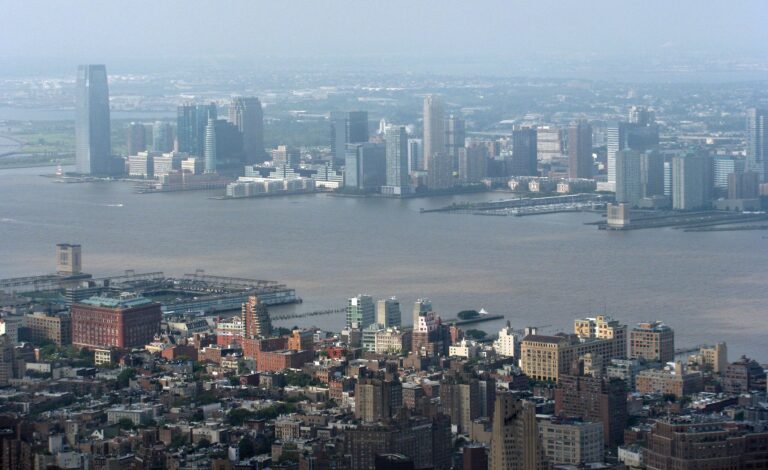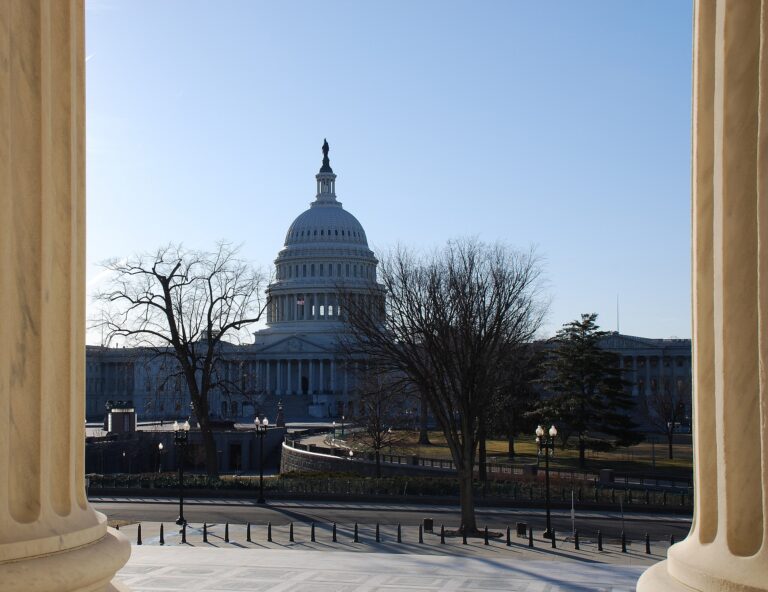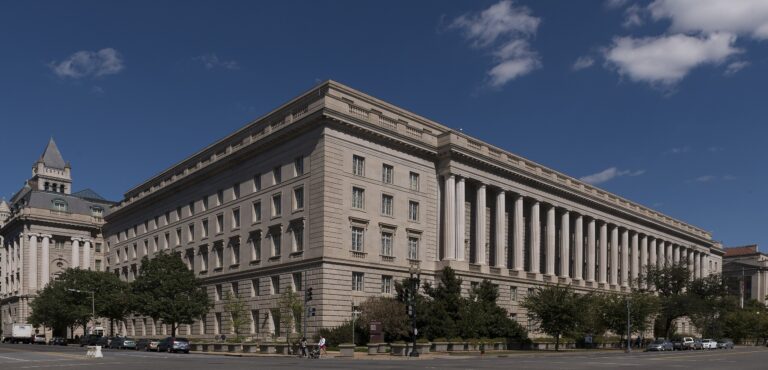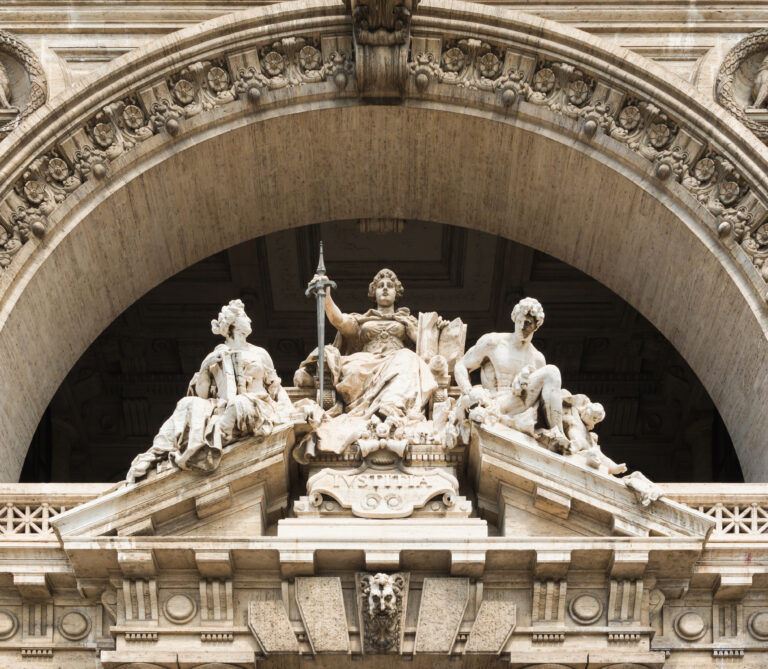
Law and Religion in the People’s Republic of China
Carsten Vala
Temple of Heaven in Beijing, China by Maros (CC BY-SA 3.0)
In this article, I will make some general arguments regarding the subject of law and religion in the People’s Republic of China (PRC) and conclude with specific observations from my fieldwork over the last twenty years on China’s Protestant population.
Grasping what “law” and “religion” mean and how they intersect in the PRC requires grappling with very different factors. The interactions of law and religion today are shaped by the long imperial Chinese tradition of law, in addition to an equally long and diverse history of religious practices and traditions. Then, in the 20th century, Marxism, together with political leaders’ efforts to “modernize” China, led to the creation of new categories of spiritualities which were separated into what the state permitted (orthodox) and did not (heterodox). And, this leads to today, the 21st century, in which the PRC reveals a bifurcated legal-religious reality. On one hand, the PRC asserts a more modern and “legal” standard, in the sense that it passes policies apparently based on recognizable standards of “law;” on the other, the Party-state is less modern or neutral in its treatment of various religious practices, as it encourages the spread of those with longer histories of enculturation, encouraging the spread of Daoism, Buddhism, and popular religions but resisting against the spread of Christianity and of Islam. Thus, orienting oneself to the practice of law and religion in the contemporary PRC demands attention to three different overlapping and intersecting layers of legal traditions, modernizing impulses towards religious practices, and the 21st century exercise of political power.
Law in the imperial tradition and in the PRC
The first layer comprises competing understandings of the concept of law. In Western countries, particularly liberal democracies, law is understood to be reasonably separate from any particular ruler’s day to day exercise of power. It is the role of the legislature to make laws, whereas the executive merely enforces the laws. So, while law and its workings in society are certainly shaped by a ruler’s actions, liberal democracies in their ideal versions guide and define what a ruler can do. From the perspective of those who are ruled, the law plays an important role in acting as a restraint on the arbitrary exercise of power. The “rule of law” phrase captures this view.
By contrast, in the long imperial Chinese tradition, law has been conceptualized as serving a much different role in governance. In fact, a key component of the imperial tradition was “legalism,” which is the philosophy that leaders should view the law as a tool of governance instead of as a limit on their power. In other words, the emperors viewed the law as an instrument to ensure that subjects behaved as the emperors desired them to. Law, its enforcement, and the execution of punishments (when laws were violated) together served to admonish subjects and keep them in line, rather than serving as a restraint upon a ruler’s power. Emperors issued specific laws and imposed punishments to produce desired behavior. Here, the standard for successful laws do not consider their universal applicability, the breadth of law covered, nor its result of equal consequences. Emperors used it to mete out punishments that were harsh, even cruel, as warnings to others in society. The question was not whether punishments “fit” the crimes, but whether laws and punishments yielded the desired outcome.
Of course, the PRC is not imperial China, and, at first glance, contemporary China projects a different reality. PRC law serves diverse functions in multiple realms, so we should not expect the Legalist tradition to simply continue unchanged from the past. For example, one important role of PRC law has been to signal to foreign investors that their financial capital will be “safe” from government expropriation and that disputes over profits will be adjudicated in courts through known rules and transparent procedures.
Further, the Constitution of the PRC declares that the country is ruled “according to law,” and that all governments, parties, public organizations, and businesses must “abide by the Constitution and the law.” Yet, as Party Secretary-General Jiang Zemin elaborated in 2000 when he introduced the idea of “ruling the country by law,” yifazhiguo, actually means using “authority and coercive means to regulate actions of members of society.”
Unsurprisingly, social science scholarship on contemporary law in the PRC today applies the phrase “rule by law” rather than “rule of law” to captures the law’s instrumental role in governance and its ability to achieve desirable political results instead of its restrictive nature and ability to constrain abuses of Party-state power.
Regardless of this debate, there is no law that directly governs religion in the PRC, only rules and policies. Yet, in my research, Chinese Protestant leaders have longed for laws on religion for several reasons. In part, they want disputes over the permissibility, scope, and content of religious activities to be settled by courts rather than by Party-state offices charged with “managing” religious affairs. Having courts rule on these issues would mean that the procedures would be more open, the standards for decisions more transparent, and the outcomes more amenable to societal input. By contrast, Party-state offices have no similar pressure to justify their decrees.
“Religion” in the PRC today
Making sense of law and religion in the PRC leads to another layer of complexity: what “religion” is in China. Historically, the Chinese term for religion (zongjiao) is not actually Chinese in origin. In fact, Chinese thinkers adopted this neologism from the Japanese language as they grasped for a word to use when translating Western texts. Mayfair Yang has shown that this term was adopted by elites in the early 20th century as part of Chinese elites’ attempts to become “modern.” Spiritual practices that met the standard of “religion” were juxtaposed with other practices such as popular religions that were tarred with the label “superstition,” Mayfair Mei-hui Yang has explained. The conceptual standard for “religion” in China was Protestant Christianity in the West. Therefore, all supposedly modern “religions” had to look like Protestant Christianity, with beliefs, teachings, and institutions.
In the decades leading up to and beyond 1949, non-Christian religions tried to squeeze into this Protestant mold, developing church-like organizations, national associations, and belief systems. As the economic reforms proceeded, various spiritual practices revived, spilled out of the conceptual straitjacket of Western Protestant forms, and sprouted into many different niches in contemporary PRC society. For example, Nancy Chen examined the reemergence of qigong, a Chinese exercise and healing practice, in the 1990s.
What this means for law and religion in the PRC is that a wide range of the country’s spiritual and physical practices do not fit under the rubric of “religion” as it is understood in the West since they are practiced outside of church-like institutions created to contain religion. Religion in China, instead, spills out of its pigeonhole and appears in multiple spaces in society, and are not limited to temples, mosques, and churches. This is true of most popular religious activity, that it is diffused throughout various social institutions, making its administration or management subject to a range of rules and regulations (e.g. concerning national heritage sites). But, I also found that this is true even of Protestants and Catholics, most of whom meet in unregistered “house church” congregations separate from recognizable church buildings and approved organizations.
Contemporary politics and religion
Adding to the discussion of law and religion in the PRC is a third layer of political pressure which has intensified enormously under the current CCP chairman Xi Jinping. Since assuming power in 2012, Xi has steadily centralized political power by establishing multiple leadership groups within the Party led by himself. This also meant weakening the government and societal influence across many issue areas, such as the media, courts, policymaking, and policy implementation. In regards to religion, Xi closed the public space that his predecessors opened for religious groups, space which empowered religions to engage in societal work beyond their religious boundaries. For example, Jiang Zemin in the late 1990s spoke of the positive role religions could play in contributing to achieving social and economic goals, and Hu Jintao in the 2000s viewed them as contributing to a “harmonious society.”
This largely positive view of religious groups in the mid-2010s allowed Protestants and Buddhists, for example, to engage in a wide variety of social work, ranging from poverty alleviation and education to medical and elderly care. Perhaps most striking was that officially sanctioned groups and unregistered groups were doing such work.
Yet, from 2014-2015 onwards, Xi increased repression and imposed a much more restrictive legal environment on religions deemed politically threatening or suspect. These religions included Protestant and Catholic Christianity, which has long-standing ties to Western democracies, as well as religions for whom the majority of worshippers identified with a non-Han ethnic group like Tibetan Buddhism, Hui Islam, and Uighur Islam. Announcing a major campaign in 2016 for “Sinicization,” Xi launched a ‘culture war’ to make China’s religions more Chinese. In 2018, new religious affairs regulations allowed religious organizations to “possess property, publish literature, train and approve clergy, and collect donations” but also restricted religious education, religious celebrations, and set up oversight of online religious activity.
Among Protestants, the official national association has pushed political loyalty to the top of its agenda for the first time ever. Monks in Tibetan Buddhism have been compelled to substitute Chinese-language scriptures for Tibetan-language ones and reportedly will soon have to chant in Mandarin, too. The Arabic-style features of Hui Muslim mosques and restaurants have been torn down, among other changes. The arbitrary detentions of Uighur Muslims has perhaps been the most devastating news.
Then, in 2020, the Chinese Communist Party (CCP) mandated religious groups to “educate and guide religious professionals and religious citizens towards supporting the leadership of the Communist Party of China,” basically pressuring religions to spread CCP ideology and values. Religions must not only display the Chinese flag in their buildings, but must also preach Party-focused patriotism or face legal punishment.
Looking forward: law, religion, and politics
With a distinctly Chinese approach to law (legalism), and having imported a Western concept of “religion” in the twentieth century, the contemporary PRC has long displayed a unique version of law and religion. Yet, in the last decade or more, Xi has applied intense political pressure on religions, pressure that has produced the more repressive stream of law towards religion, a legalist version of “rule by law.” None of this was preordained by the tradition of Chinese law or by the Chinese instantiation of the Western concept of religion. Rather, it has been the politics of Xi Jinping – and his agenda to rejuvenate the Chinese nation and achieve the “Chinese Dream” – which has led to this outcome.
Further, my own research on China’s Protestants illuminates several patterns regarding Chinese law and religion.
First, as an avowedly Marxist regime, the PRC’s official ideology still asserts that religion will disappear as the economy develops further. Yet, in reality, PRC leaders have come to accept that religious activity will persist in the country. With that acknowledgement, officials from the grassroots front-line bureaucracies to the top levels have found ways to live with religion, especially when extreme pressure from the CCP is absent. This means that, whatever the country’s official policies or laws assert on paper, local officials and religious leaders have learned to tolerate each other.
Second, my research demonstrates that, when authorities treat religious activities, organizations, and actors harshly, this is typically the result of a top-level official pursuing their agenda rather than the particularities of the “law”– or really policy, as there is no religious law, per se. Under Hu Jintao and earlier leaders, the Party-state reined in religion or permitted religious activities to expand multiple times, but such changes were not signaled by changes in the ‘law.’ Instead, the top leader set the broad nature of the state-religion interaction (as either relaxed or strict) and communicated that agenda primarily through bureaucratic meetings and oral instructions. (The unprecedented number of large-scale Protestant congregations that emerged in the 2010s occurred via tacit understandings between local religious leaders and the Party-state officials in charge of religious management.)
Third, looking ahead, President Xi Jinping does not appear to have any near-term plans to reduce the intense pressure on the religious groups the Party-state deems threatening. The last five years in particular have revealed a campaign to reduce the visibility of their religious symbols, increase the monitoring of religious activities and populations, and compel political content to be introduced into religious messages.
Thus, the outlook for law in the PRC to act as a restraint on official power enacted towards religion, at least in ways that would be recognizable to Western observers, continues to dim. ♦

Carsten Vala is Professor and Department Chair of Political Science at Loyola University Maryland. He has conducted fieldwork on the growth, activism, and repression of Protestants in China, resulting in journal articles, popular media pieces, and a book entitled, The Politics of Protestant Churches and the Party-State in China (Routledge, 2018).
Recommended Citation
Vala, Carsten. “Law and Religion in People’s Republic of China.” Canopy Forum, August 1, 2024. https://canopyforum.org/2024/08/01/law-and-religion-in-the-peoples-republic-of-china/.
Recent Posts










